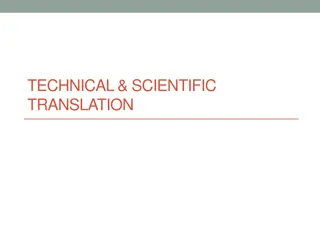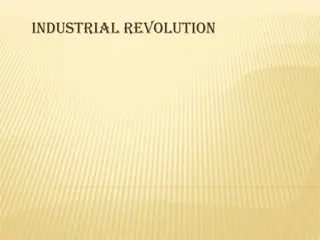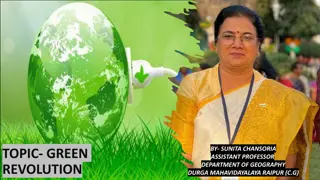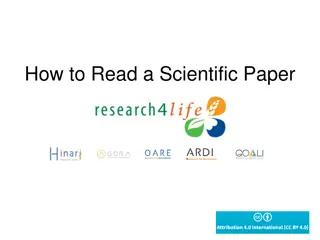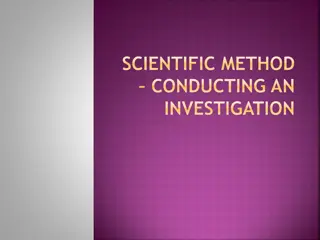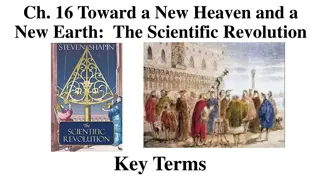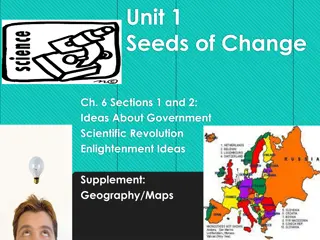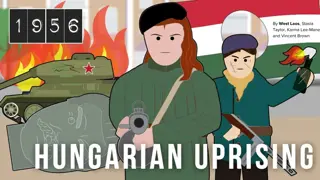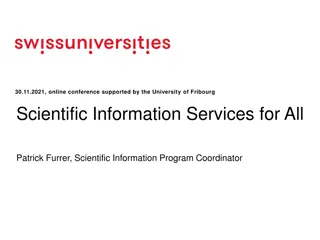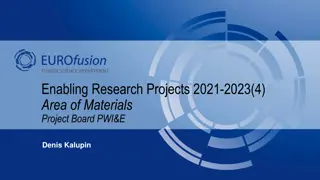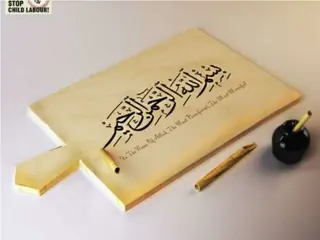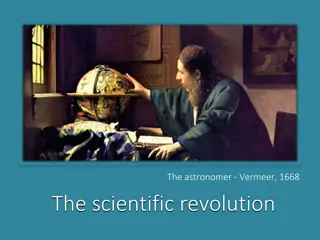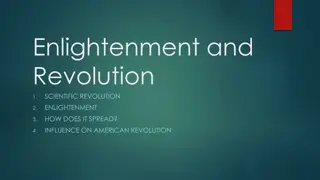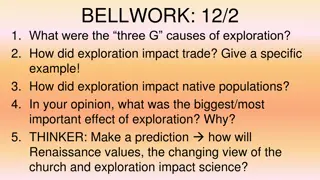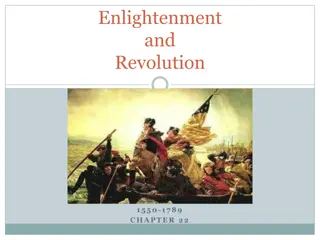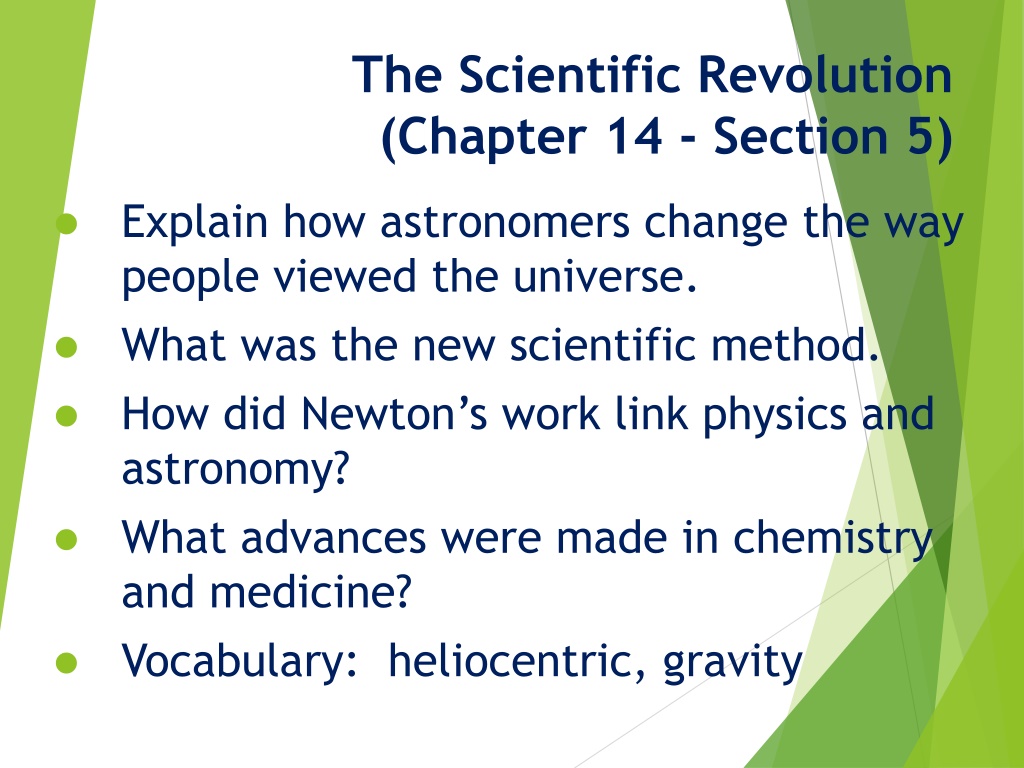
Revolutionizing Views: Astronomy & Science Advancements
Discover how astronomers reshaped perceptions of the universe through the heliocentric model, the scientific method, Newton's gravitational theory linking physics and astronomy, and advancements in chemistry and medicine during the Scientific Revolution. Explore key figures like Copernicus, Kepler, Galileo, and Newton who paved the way for a new era in scientific understanding.
Download Presentation

Please find below an Image/Link to download the presentation.
The content on the website is provided AS IS for your information and personal use only. It may not be sold, licensed, or shared on other websites without obtaining consent from the author. If you encounter any issues during the download, it is possible that the publisher has removed the file from their server.
You are allowed to download the files provided on this website for personal or commercial use, subject to the condition that they are used lawfully. All files are the property of their respective owners.
The content on the website is provided AS IS for your information and personal use only. It may not be sold, licensed, or shared on other websites without obtaining consent from the author.
E N D
Presentation Transcript
The Scientific Revolution (Chapter 14 - Section 5) Explain how astronomers change the way people viewed the universe. What was the new scientific method. How did Newton s work link physics and astronomy? What advances were made in chemistry and medicine? Vocabulary: heliocentric, gravity
After the Quiz Quietly read pages 26-28 in your Study Guide. Answer the questions at the bottom of page 28 in complete sentences!
Classwork: 3/31/17 Complete page 25 by describing each individual in your Unit 8 Study Guide once you are done with the quiz. Use Chapter 14 Section 15 in the World History textbook to help!
Changing View of the World In 1543, Polish scholar Nicolas Copernicus proposed a heliocentric, or sun-centered, model of the universe. Most rejected this theory because it went against church teachings. In the late 1500s, Danish astronomer Tycho Brahe provided evidence that supported Copernicus. After his death, his assistant German mathematician Johannes Kepler made calculations that also supported Copernicus. His theory was finally accepted by experts after Galileo Galilei s invention called the telescope showed the observations were true. He was condemned by the church as well.
Changing View of the World Nicolaus Copernicus Galileo Galilei
* The Scientific Method Systematic approach to problem- solving. Characterized by distinct steps of hypothesis, experiment, observe, calculation, and conclusion. (page 366)
Newton Ties It All Together By the age of 24, he developed a brilliant theory to explain why the planets moved as they did. Using mathematics, he showed that a single force (gravity) keeps the planets in their orbits around the sun. His laws were observed for over 200 years until the early 1900s.
Class Activity 4/3/17 1. Complete page 25 in your Study Guide (use Ch. 14 of your world history textbook to help!) 2. Read pages 396-401 of your New Textbook and answer questions #3, 5, 6 on page 401 (bottom of page 28 in your Study Guide) 3. Complete page 30 Study Guide
The Scientific Revolution Copernicus 1543, Polish scholar, proposed heliocentric (sun-centered) model of universe Galileo 1630s, Italian, used telescope to prove Copernicus theory Newton 1687, English, Gravity, Inertia, Motion/Movement, Physics Bacon English, Experimentation and Observation Descartes French, Human reasoning is the best way to understand, (use your brain!), I think, therefore I am.
Causes of the Scientific Revolution The Renaissance fueled a rebirth of learning and inspired curiosity ! 1. Astronomers and scholars began to question ideas that had been accepted for hundreds of years! 2. Reformation prompted followers to change accepted ideas! 3. The Printing Press! 4.
III. Causes of the Scientific Revolution Medieval Intellectual Life and Medieval Universities The Italian Renaissance Renewed emphasis on mathematics Renaissance system of patronage Navigational problems of long sea voyages Better scientific instruments
I. The Aristotelian Universe Derived from Ptolemy, Aristotle, and Plato Classical Writings Christianized Components of Medieval Cosmology Medieval Physics Belief in Matter and Form Earth = Living, Protected Sphere
A. Copernicus (1473-1543) Heliocentric Theory Sun-centered universe Believed that the EARTH TRAVELS AROUND THE SUN! On the Revolutions of the Heavenly Spheres (1543)
D. Galileo Galilei (1564-1642) Was famous for constructing a big telescope He discovers mountains on the moon, sunspots, moons orbiting Jupiter Gets locked up by Church Threatened with Death, he recants his discoveries.
E. Isaac Newton (1642-1727) Discovered Gravity Argues for a universe governed by natural laws Principia; Mathematical Principles of Natural Philosophy (1687)
F. Francis Bacon (1561-1626) Stressed experimentation and observation! Emphasis on practical, useful knowledge
G. Rene Descartes (1596-1650) Believed in using human reasoning to find scientific truth Father of analytical geometry
Jethro Tull Made scientific advancements in agriculture! For example, created the seed drill!
IV. Consequences of the Scientific Revolution Rise of the Scientific Community --Royal Society of London (1662) --Academy of Royal Sciences (1666) The modern scientific method A universe ordered according to natural laws
IV. Consequences of the Scientific Revolution (cont) Laws discovered by human reason De-Spiritualized and de-mystified the Universe Mechanical View of the Universe Deistic View of God --God as the cosmic capitalist
More Scientific Advances Chemistry: Robert Boyle distinguished between individual elements and chemical compounds. His work opened a modern chemical analysis of the composition of matter. Medicine: Andreas Vesalius published the first accurate and detailed study of human anatomy. French physician Ambrose Pare, developed a new and more effective ointment for preventing infection. English scholar William Harvey described the circulation of the blood for the first time.
Summary: The Scientific Revolution was a time of profound change beginning in the mid-1500s that was shaped by a new way of thinking about the physical universe, and how the world around us works.
Renaissance, Reformation, Revolution Review: Humanism: Focus on the world around us, how it works, and asking the question why? Science & Technology: Looking for an explanation of how/why things work, and how to improve them, scientific method, printing press Art: Realism, anatomy, shading, perspective Literature: How To books (The Prince), ideals, history. Human behavior, Shakespeare,
Questions to Answer: Define Renaissance Why did it start in Italy? What s Humanism? How did it fuel the Renaissance? Who s Machiavelli? What d he write? What d it say? Martin Luther (Protest & Reform)? What s the deal with the Printing Press? Explain the Scientific Method. Who are: the Medici s, da Vinci, Shakespeare, Henry VIII, Galileo, Newton, Descartes, Bacon Packet Review: All Multiple Choice Review Questions at the end of the packet Book Review Page 369 Analyzing Tables #1-3 Page 368 Reviewing Facts #1, 2, 4, 5, 9, 10
Chapter 14 Review: 1. Prentice Hall (Textbook) Site: Chapter 13 Assessment 2. Quizlet Mrs-Vona 2. Regentsprep.org Multiple Choice Questions for the following Sections: 4c European Renaissance 4d Reformation & Counter-Reformation 6a Scientific Revolution * More importantly: Look at the Renaissance review section under Golden Ages and the Reformation & Scientific Revolution reviews under Change/Turning Points
Book Review 1. Page 369 Analyzing Tables #1-3 2. Page 368 Reviewing Facts #1, 2, 4, 5, 9, 10


